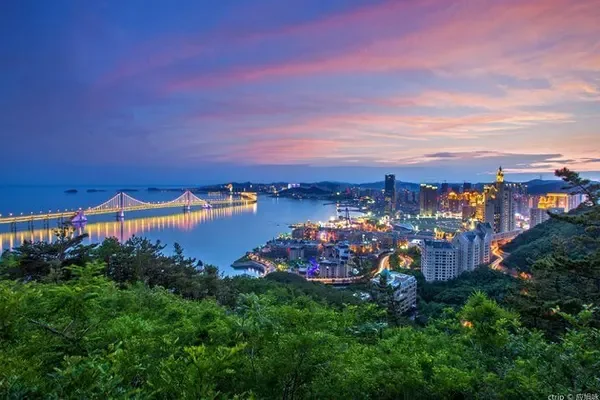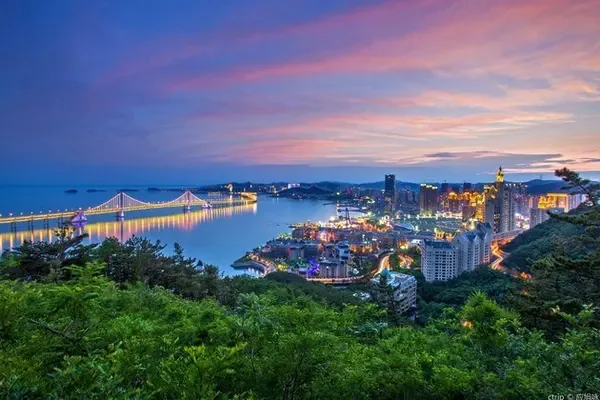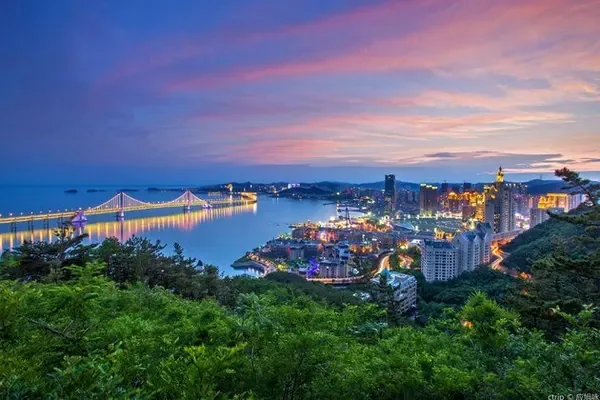Ningxia, located in the upper reaches of the Yellow River Basin, is one of the birthplaces of Chinese civilization. It is located in the hinterland of the Northwest Plateau, surrounded by Inner Mongolia, Gansu, and Shaanxi provinces, faces the Mongolian Plateau in the north, and connects with the Loess Plateau in the southeast. The Ningxia Plain in the central part, known as "the south of the Yangtze River", is rich in crops and melons and fruits.
Yinchuan, the capital of the Ningxia Hui Autonomous Region, is located in the northern part of the autonomous region. It is an ancient city with a long history and the capital of the Xixia Dynasty established by the Dangxiang clan in history.
In August 2014, the trip to Ningxia began in Yinchuan.
Before going, I roughly determined the main destinations: Shahu, Xixia King Tomb, Rock Painting Museum and Nanguan Grand Mosque. I didn’t check the specific food, accommodation, and travel strategies. I will talk about it when I get ready.
Arrive at Yinchuan Railway Station (afternoon).
The (new) Yinchuan Railway Station in the new urban area.
The front of Yinchuan Railway Station is very empty, the buildings are sparse, and there is a bus hub leading to the old city.
Because I didn't make a strategy in advance, I saw this situation after I left the station, and I didn't know where to go to the southeast, north, and west. Wandering back and forth in the empty train station until the evening, after several inquiries, inquiries, evaluations, and judgments, I finally determined the correct direction for the travel and accommodation in Yinchuan—take bus No. 30 to the Yinchuan Tourist Bus Station, which is the north gate Near the bus station.
In a distant place, in a strange land, the mother and son are sometimes very helpless. But there is always a time to solve all kinds of problems.
Sitting on the bus and looking out the window, although it is located in the inland plateau, Yinchuan is still a modern city scene, and the expected ethnic and regional characteristics are not particularly obvious for the time being.
The biggest impression is the city scenery along the way in the evening - the sky is high and the clouds are light.
Eventually, settled down near the North Gate (tourist) bus station. It is located in the old town of Yinchuan City, with convenient long-distance and urban transportation from various scenic spots.
Light green, white noodles, clear soup, spicy red. This is the characteristic of authentic Muslim ramen. For several days in Yinchuan, or breakfast, or lunch, or dinner, I have to come here every day-the [Daxibei Beef Ramen Restaurant] directly opposite the North Gate Bus Station has at least one meal. You can never get enough of the authentic Muslim ramen, and the aroma is still lingering on your lips.
The tempting story of stewed noodles.
sand lake
On the first day after settling in, go out directly from the hotel, buy a ticket to Shahu at the Beimen Bus Station (Yinchuan Tourist Bus Station), and go to the Shahu Scenic Area belonging to Shizuishan City. It can be seen that a convenient place to live is very important for travel.
There is an artificial landscape outside the gate of the Shahu Scenic Area. There are egrets spreading their wings and standing in the lake. It seems that I have heard the call of the birds in the Shahu Lake.
These thatched huts make people feel the desolation and loneliness of the frontier at once.
Enter the Shahu Scenic Area. The sky is suffocatingly blue.
Cross the pier upstream and enter the lake.
Clumps of reeds grow in the lake. The sky is gray, the wild is vast, and the wind blows the reed flowers.
The vast sky beyond the Great Wall.
In the distance, the outline of Helan Mountain is looming, stretching endlessly. I like the scenery beyond the Great Wall.
Looking far away, I want to see the end of the lake.
Desert vista.
The dense clumps of reeds are a paradise for birds.
Sand lake is a typical wetland landscape.
The boat docked and landed on Bird Island.
Bird Island is actually covered by a big net. If the big net is not withdrawn, the birds will not be able to fly out. If so, what about bird migration?
A free bird (can't name it) was found in the reed straw outside the net. Is it a cormorant?
Let us shake the "boat pole", and the boat pushes away the waves-shuttles among the reeds.
The boat approached, and found that the bird just now was still combing its feathers leisurely.
Hanging green vines.
aloe flower
There are always enough reeds.
Come to the desert area.
In the scorching sun, climb up the sand hill.
Extra with a pair of sandals and a pair of slippers. When traveling for a long time, two pairs and four pairs of shoes need to be worn in rotation, which is suitable for various situations (wading in water, sand).
The reason why the sand lake is called the sand lake is because there are sand and lakes here, the sand and water are connected, and the reed birds depend on each other, forming a spectacle where the desert and the lake coexist. Shahu Lake was originally a low-lying land, and the water overflowed from the groundwater, and the Yellow River water and rainwater gathered together to form a natural lake. The sand comes from the Tengger Desert in the north. The sand gathers here with the monsoon, and gathers the sand to form hills, forming a barrier of lake water here for many years.
Climb to the top of the dune to look out over the top of another dune.
Sitting on the top of the dunes, immersed in the legend of the beautiful sand and lake...
According to legend, Helan is a beautiful Mongolian girl, and Mohan is a handsome young man of the Dangxiang tribe. They fell in love at first sight and made a private decision for life. Later, Genghis Khan wanted to take Helan as his concubine, but Helan vowed to die. After the two eloped, they both took the elixir, and Helan turned into a lake, and Mohan into a desert. They cuddled together and never separated.
Sitting on the raised sand dunes between the sand and the lake, with the sand on the right and the lake on the left, this is the spectacle of the sand lake.
Shahu Wetland Museum
There is a wetland museum in the desert area. Here, I have gained a lot of knowledge and learned a lot about wetlands.
large stuffed pelican
beautiful bird! They are holy friends of man!
Desert area landscape.
Return to the water's edge with abundant aquatic plants.
Sand Sculpture Scenic Area
Shahu fisher girl sculpture.
Before leaving, I saw the famous Shahu food - big silver carp in a nearby restaurant.
Return to Yinchuan in the afternoon.
【To be continued】Next issue: Tombs of Xixia Kings, Helan Mountain Rock Paintings
The above content comes from the original public account [Childhood on the Road], focusing on parent-child self-help travel, covering all provinces and autonomous regions across the country, welcome to search and follow.



